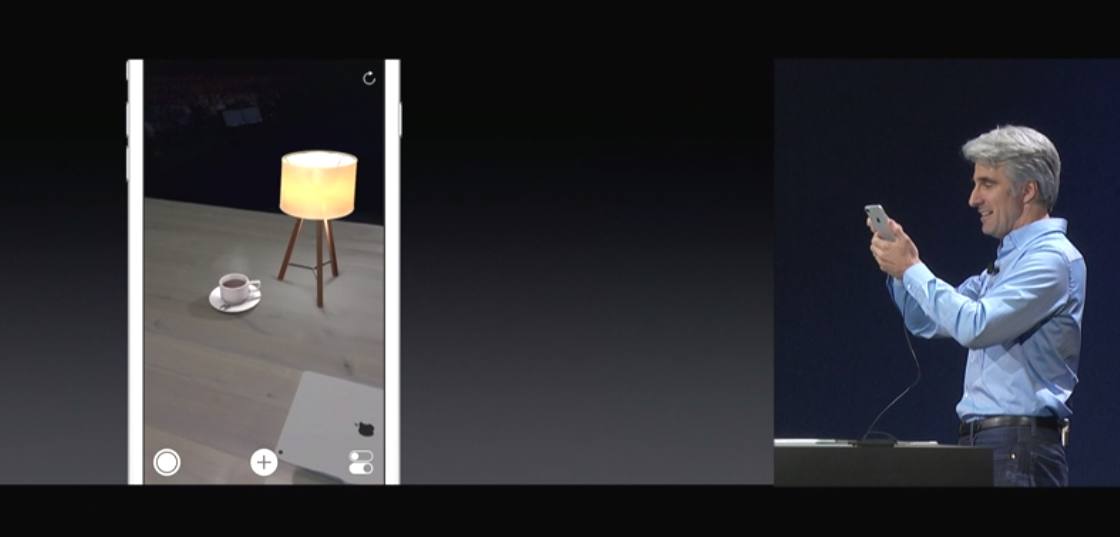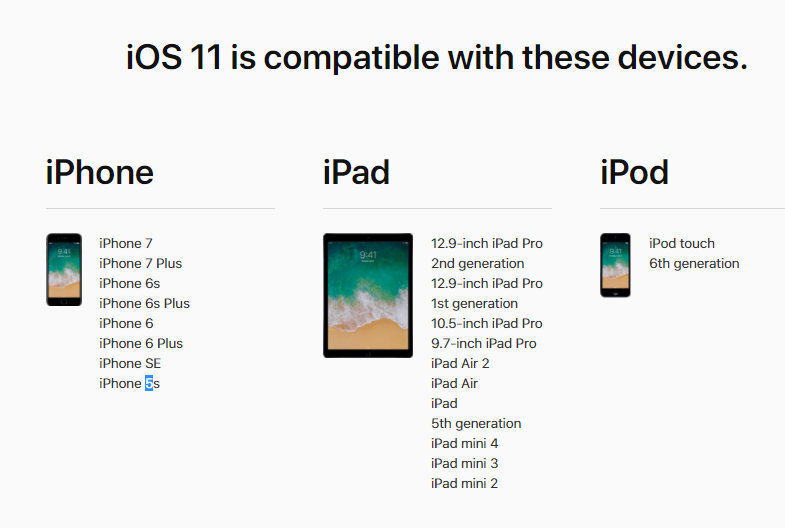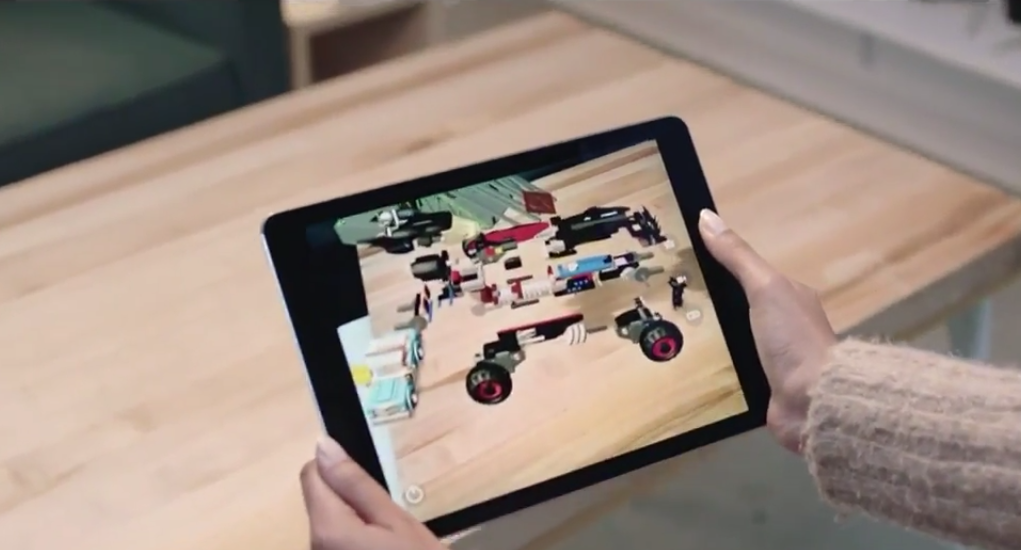Apple’s annual Worldwide Developer Conference (WWDC) is here, and today’s keynote saw a number of VR-specific announcements including Apple’s first VR-ready computers to go along with the launch of the company’s newest macOS High Sierra. While the company is finally going ‘VR-native’ for desktop, Apple is also zeroing in on augmented reality for iOS 11 with the entrance of their newly revealed app developer kit ‘ARKit’.
Possibly taking a swipe at Facebook’s latest AR demo at F8 in April, Senior VP of software engineering Craig Federighi said: “We’ve all seen a lot of carefully edited vision videos on this topic recently, but in this case, I’d like to show you something for real.”

Starting up a test application that will be made available to developers, Federighi explains that with the iPhone’s computer visions capabilities it’s able to map surfaces and add digital objects—replete with interactive animations and dynamic lighting. Adding a steaming coffee cup, a lamp and a vase to a bare, marker-less table, the tracking proves to be relatively solid.
Federighi says that ARKit provides fast and stable motion-tracking, plane estimation with basic boundaries, ambient lighting estimation, scale estimation, support for Unity, Unreal, SceneKit and Xcode app templates—all available on “hundred of millions of iPhones and iPads […] making overnight ARKit the largest AR platform in the world.”
Apple says iOS 11 will be made available to iPhone 5s and later, all iPad Air and iPad Pro models, iPad 5th generation, iPad mini 2 and later, and iPod touch 6th generation. iOS 11 will be released this fall, likely in tandem with iPhone 8 and iPhone 7S smartphones. A public beta is coming in June.

Apple is working with third-parties such as IKEA, Lego, and Niantic to use ARKit, with the company showing an improved Pokémon Go on stage that looks to actually utilize augmented reality to bring the game to life. Because ARKit uses computer vision that relies on the device’s onboard sensors and CPU/GPU, no external equipment is required to run these sorts of AR experiences.
The keynote also revealed a new AR-focused company from critically-acclaimed director and FX guru Peter Jackson called ‘Wingnut AR’. A special demo showed off the graphical and camera-based tracking capabilities of Apple’s hardware featuring a complex, real-time rendered scene digitally placed on a tabletop using an iPad. Wingnut AR is bringing an AR experience to the App Store later this year. Check out the video below to see Wingnut AR’s special Apple demo.







